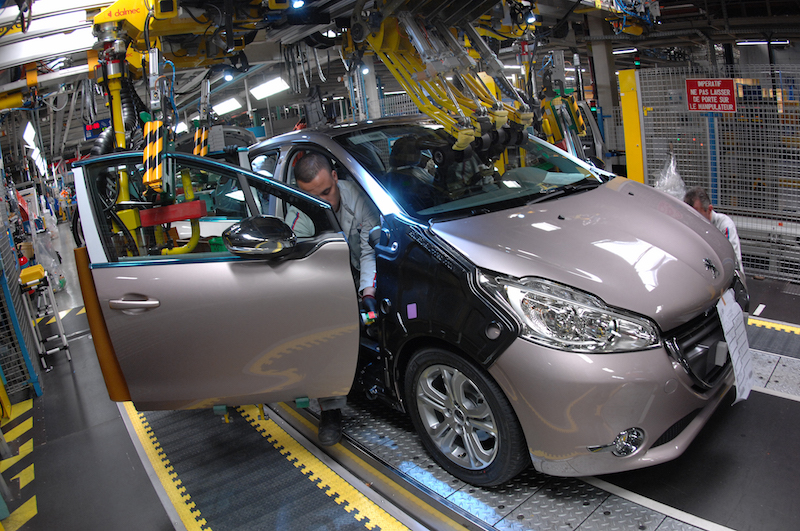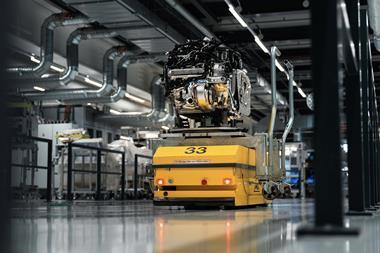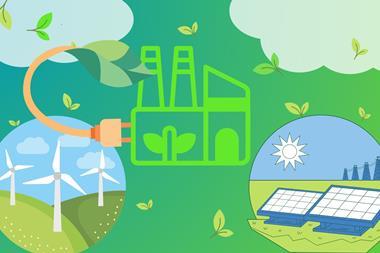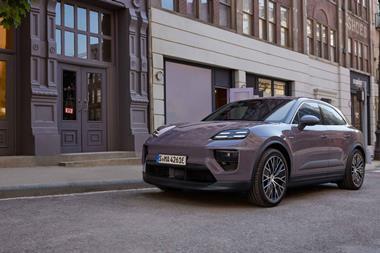With new management, a new strategy and new shareholders, PSA is experiencing a change in fortunes

It was not long ago that the future of PSA was called into question. The joint venture (JV) and cross-shareholding arrangement with General Motors was collapsing, the company was in financial trouble and it needed capital injections from the Chinese company, Dongfeng, and the French government.
However, the new CEO, ex-Renault executive Carlos Tavares, appears to have effected a quite remarkable turnaround. When he took charge, the company had accumulated €7 billion ($7.7 billion) of losses in the preceding two years and a severe overhaul of the company’s strategy and operations was required; as part of the restructuring which followed, the stake of the Peugeot family was reduced and two new shareholders, the French government and Dongfeng of China (PSA’s long-term manufacturing partner in the country) took 14% each; GM sold its shareholding ahead of these transactions being completed.
Some key objectives for the turnaround were set not long after Tavares took the helm. His 'Back In The Race' strategy called for a 2% operating margin in 2016, major cost savings, an overhaul and reduction of the company’s model line-up, and the modernisation of key manufacturing facilities. The four pillars of the new strategy were aimed at differentiating the brands better, especially with improving pricing; focusing on a reduced range of core models globally; achieving profitable growth worldwide; and establishing competitiveness in all core areas of the business.
Although much remains to be done, the success of this new strategy is already becoming clear, as shown by the 2015 figures; having targeted a 2% operating margin by 2016, the automotive division achieved a 5% margin last year. Moreover, the company’s net profit of €1.2 billion compared very favourably with losses of €555m in 2014. Group revenue rose by 6% after adjustments, following the planned sale of Faurecia’s exterior components division to Plastic Omnium.
Strong financials underpinned by rising salesWorldwide unit sales rose by 1.2% to 2,973,000, with nearly 6% growth in Europe; particularly strong growth came from the Citroen C4 Cactus, Peugeot 108, 2008 and 308. However, sales of several models fell, and this was not just for those which are coming to an end and will not be replaced: the 3008 crossover was down nearly 9%; the 508, Peugeot’s largest car, was also down nearly 9%; and the Citroen C4 fell nearly 17% worldwide. Most of the company’s vans, both those made by Fiat in Italian and Turkish factories and those made by PSA in Spain, all rose – some by more than 10%, as was the case with the Peugeot Expert and Boxer and the Citroen Jumper. The Expert’s rise of 10% and that of its sister model, the Citroen Jumpy (up nearly 8%) was especially impressive in light of the all-new versions of these models appearing in 2016.

Investment continues, despite modest growth projections for Europe For 2016, the company is expecting modest European growth of around 2%, while 5% is projected in China; Latin America and Russia, by contrast, are expected to continue to decline, by 10-15%. In their place, PSA expects great things from Iran (more of which below), and it has also followed Renault into North Africa. Back in Europe, additional shifts at Sochaux and Mulhouse have been introduced. At Sochaux, an additional half-shift and 300 jobs were added in February 2016 in order to cope with rising European demand for the Peugeot 2008, Citroen C4 and DS4.
At Mulhouse, where €400m is being invested to modernise the plant and turn it, in PSA’s words, into “one of the top manufacturing facilities in Europe”, 950 new jobs are required to meet better than expected demand for the Peugeot 3008 (despite its poor sales in 2015) and 5008, as well as the DS5. The investment will also support a new DS model line to be made at the plant from 2018. The new recruits to make the C4 and 3008 may also suggest that earlier cutbacks were too severe.
In terms of the vehicles which underpin the creation of new jobs and parallel investment, the C4 is a conventional car but the others are either crossovers or part of the DS brand, PSA’s approach to the premium market. And it is in these segments, where – in Europe at least and probably elsewhere too – PSA’s future will lie. A range of new Citroens, based around the Aircross concept and building on the edgy (if somewhat controversial) design elements of the C4 Cactus will appear over the next couple of years. Conventional models such as the C3 and C4 will gradually decline in significance, and some may disappear – the C2, C5 and C6 are names which, if they reappear at all, will be used on models which look very different indeed from their last incarnations.
Unlike Renault, which has gone down the electric vehicle (EV) route, PSA has both hybrid and electric technology under development. It is also at the leading edge of engine downsizing, with one of the most successful three-cylinder petrol engines on the market. This, along with its selective catalyst reduction system, means the company can claim to be well on target to achieve less than 105g of CO2 per kilometre; it also has both plug-in hybrid and full EVs on the way, including an EV to be developed in conjunction with Dongfeng which should be on the road by 2020.
A core aspect of PSA’s past strategy has been its use of JVs, especially with Fiat, to produce vehicles for which its own volumes were seen as insufficient to develop platforms alone; hence the microvan JV in Turkey (where the Fiat Fiorino is used as a basis for the Citroen Nemo and Peugeot Bipper) and the large van JV in Italy (where the Fiat Ducato is used to produce the Citroen Relay and Peugeot Boxer). A third JV, in France, which produced MPVs and mid-size vans, has seen Fiat replaced by Toyota in a marriage of convenience, neither company having enough volume in Europe in this segment to justify projects of their own; all-new models for Peugeot, Citroen and Toyota will be launched during 2016. The PSA-Toyota relationship also includes a joint plant in the Czech Republic which produces the Citroen C1/Peugeot 108 and the Toyota Aygo; new versions of all these were launched in 2015.
The GM JV, which was originally to encompass shared purchasing, logistics, new models and cross-shareholdings has been much reduced in scope and in fact is now limited to three vehicle lines in Europe. PSA will make the replacement for the Opel Zafira MPV in France in a joint programme which will encompass the new Peugeot 3008. Meanwhile in Spain, Opel will make the replacement of the C3 Picasso at its plant in Zaragoza in a joint project with the next Opel Meriva; and when the next-generation Citroen Berlingo/Peugeot Partner appears, the PSA plant at Vigo will produce a version badged as the Opel Combo, replacing a version of the Fiat Doblo which Opel currently sources from Fiat in Turkey.
As for engines, the company used to have JVs with BMW and Ford, but the supply contracts for small petrol engines for BMW/Mini and large diesels for Ford are slowly drawing to a close, while engine and transmission JVs with Renault in France have also ended.
PSA leading the way back into IranWhile JVs in Europe, with traditional partners, have reduced in number and scope in the last few years, new relationships are being developed. The shareholding by Dongfeng will mean co-development of a new small-car platform, which should form the basis of up to 10m vehicles made across the PSA and Dongfeng network over the platform’s lifecycle. In addition, and in a move of great political as well as industrial significance, PSA is one of the first car companies heading back into Iran following the lifting of international sanctions in January 2016. Within hours of the announcement of sanctions being lifted, PSA had unveiled a 50:50, €400m JV with Iran Khodro (IKCO). The deal was confirmed when the Iranian president, Hassan Rouhani, visited Paris as the former pariah state was welcomed back into the global economic fold.
 New Citroen models, based on the Aircross concept and the C4 Cactus design elements, will appear over the next couple of years
New Citroen models, based on the Aircross concept and the C4 Cactus design elements, will appear over the next couple of yearsThe IKCO deal will see three Peugeot models – the 208 hatchback, 2008 crossover and the emerging markets model, the 301 sedan – being made in Iran, at a new Tehran plant. Production is due to begin by the end of 2017, with IKCO able to use this facility and the Peugeot platform as the basis for developing vehicles of its own. Moreover, the Iranian market is not the only target, with plans for regional exports of Peugeot and IKCO models.
PSA perceives Iran as a major new growth market, as the country has a significant middle-class segment with a very low ratio of car ownership. The Iranian market previously peaked at 1.6m units in 2011, and PSA is confident that this volume can be reached once again within a couple of years, and indeed hit 2m units a year by 2022. Such a volume would make it comparable to the UK, and while transaction prices in Iran may be much lower than those in Western Europe, there is no doubt that the country and the surrounding region offers significant potential for further growth.
It will not only be vehicles which are produced under this new JV. The deal calls for IKCO to achieve a local content ratio of 40% for the JV vehicles to be made in Iran. Some of this will come from domestic suppliers, and from components which IKCO will make itself, but it seems likely that several PSA suppliers will follow the company to Iran in the medium term.
Moving into AfricaThis policy of localising production in Iran mimics what PSA is doing – and indeed what Renault has already done – in Morocco. Numerous suppliers, such as Denso, Faurecia, JCI, Saint Gobain, SNOP, Visteon and Yazaki, have set up operations in the North African country. PSA is building a factory in Morocco and will likely use several of the same suppliers as Renault. These suppliers will be among the candidates for plant openings in Iran in the years ahead.
It is not only in vehicle production that PSA plans to expand in Morocco. It will open an innovation centre, OpenLab, in which PSA will co-operate with five Moroccan universities and four international universities with campuses there, to look at the kind of mobility systems which the country and the North African region as a whole will need in the years ahead. The focus will be on EVs, renewable energy sources and long-term logistics possibilities. OpenLab will run a project called Sustainable Mobility for Africa over the coming four years.
 PSA's plant at Vigo, Spain, will produce the Opel Combo – just one example of the JV strategy the OEM continues to pursue
PSA's plant at Vigo, Spain, will produce the Opel Combo – just one example of the JV strategy the OEM continues to pursuePremium ambitions for DSPSA was in a financial mess not so long ago; the involvement of the French government and Dongfeng, along with new management possessing a clear brief, appears to have brought the company back from the precipice. Investment in existing operations in France, expansion into new markets in Iran and North Africa and the repositioning of the brands have combined to present a much brighter future than PSA appeared to have not so long ago.
Peugeot will remain the traditional car brand, Citroen is being repositioned as a supplier of quirky crossovers and SUVs, with several new models expected in the next couple of years, while DS is slowly becoming a potential challenger to the German premium brands. This last part of the strategy, to create a new premium brand, will take much longer than the other moves the company is making. DS currently sells fewer than 150,000 units a year, but a new series of models are due to be launched by the end of the decade, with China at the heart of this new approach.
Whether DS will be able to reach or even supplant Audi, BMW and Mercedes – and Jaguar – is another question. However, by separating out its premium offering into a distinct brand, PSA has made a clearer statement than Ford and Renault have done; these companies have kept their near-premium versions, Vignale and Initiale, firmly within the Ford and Renault brand structures. By providing DS with its own identity, PSA is giving the brand a better chance of success than if it remained within the Citroen orbit. This decision, along with many others made under the stewardship of Carlos Tavares, suggests that PSA is indeed back in the automotive race.





























